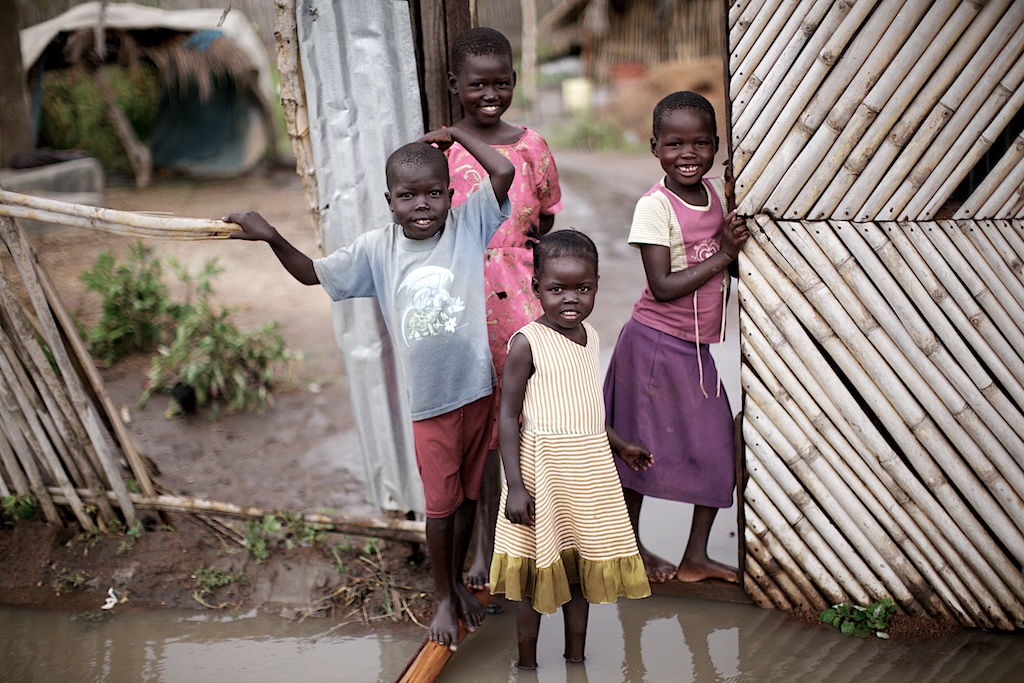Child Poverty in South Sudan

South Sudan, a North African nation that joined the U.N. in 2011, is one of the poorest and most conflict-ridden countries in the world with a GDP of 12 billion in 2015 and about 67% of the population living in extreme poverty in 2017. The younger population of South Sudan is particularly vulnerable, with around two-thirds of children requiring humanitarian assistance due to poverty, environmental risks and conflict. Child poverty in South Sudan remains an issue, but several initiatives are providing aid.
Leading Causes of Child Poverty in Sudan
- Conflict: Two civil wars in 2013 and 2016 have significantly contributed to the increase in child poverty in South Sudan. Displacement due to conflict has left several thousand children homeless and armed militias have recruited approximately 19,000 child soldiers since the conflict started. The violence caused by the civil wars has been a leading cause of internal displacement, with a total of 472,452 children affected.
- Education: In South Sudan, education rates contribute significantly to child poverty. Three out of five children have either never attended school or dropped out, which equates to one of the highest rates globally. The COVID-19 pandemic only worsened the situation by reducing school attendance rates.
- Climate: Extreme climatic conditions in the country also impact child poverty. Severe floods and droughts have affected the country in recent years, leaving 390,000 children without access to basic services and affecting 846 schools. Long droughts have led to child hunger, with more than 17,000 children suffering from severe acute malnutrition.
- COVID-19: The COVID-19 pandemic contributed to increasing child poverty issues in South Sudan. It also forced school closures and further aggravated the challenges in the education system. Reduction in global aid and humanitarian assistance due to the pandemic led to an economic crisis in the already struggling nation.
Taking Action
In recent years, South Sudan has taken action domestically. In 2018, the nation resorted to a peace agreement and implemented government reform to improve political stability. The leaders ackowledged establishing a stable government as the first step in securing a brighter future for the children of South Sudan.
Charities, volunteers and missionaries on the ground have played a crucial role in alleviating child poverty in South Sudan. For example, the United Nations International Children’s Emergency Fund (UNICEF) plans to vaccinate 2.7 million South Sudanese children against measles and provide 1.4 million children with access to clean water, hygiene and sanitation facilities in schools by the end of 2023. UNICEF also aims to treat almost 300,000 children in South Sudan for severe wasting on top of efforts to provide 75,000 children and guardians with “mental health and psychosocial support.”
The Global Partnership for Education (GPE) has partnered with South Sudan since 2012 and runs initiatives to enhance the education system in South Sudan by offering financial aid through UNICEF grants and providing on-the-ground support. UNICEF provided a COVID-19 response grant of $7 million for 2020 to 2022 to secure “self-learning materials” for learners, create custom radio broadcasted learning programs for students of certain grades and launch a “back-to-school campaign” to motivate students to resume school attendance, among other efforts.
With financial support from the international community, efforts are ongoing to gradually end child poverty in South Sudan.
Looking Ahead
South Sudan’s children have endured years of hardship since the country’s independence from all spheres of life. Whether that be conflict, climate disasters or a lack of education, these children have lived through harsh realities and poor conditions. With the government and international charity organizations working to solve the issues of child poverty, South Sudan continues to see positive change. The government reforms have led to notable reductions in conflict incidents.
While there is still room for progress, ongoing efforts have seen success and present the children of South Sudan with hopes of a brighter future.
– Max Steventon
Photo: Flickr
